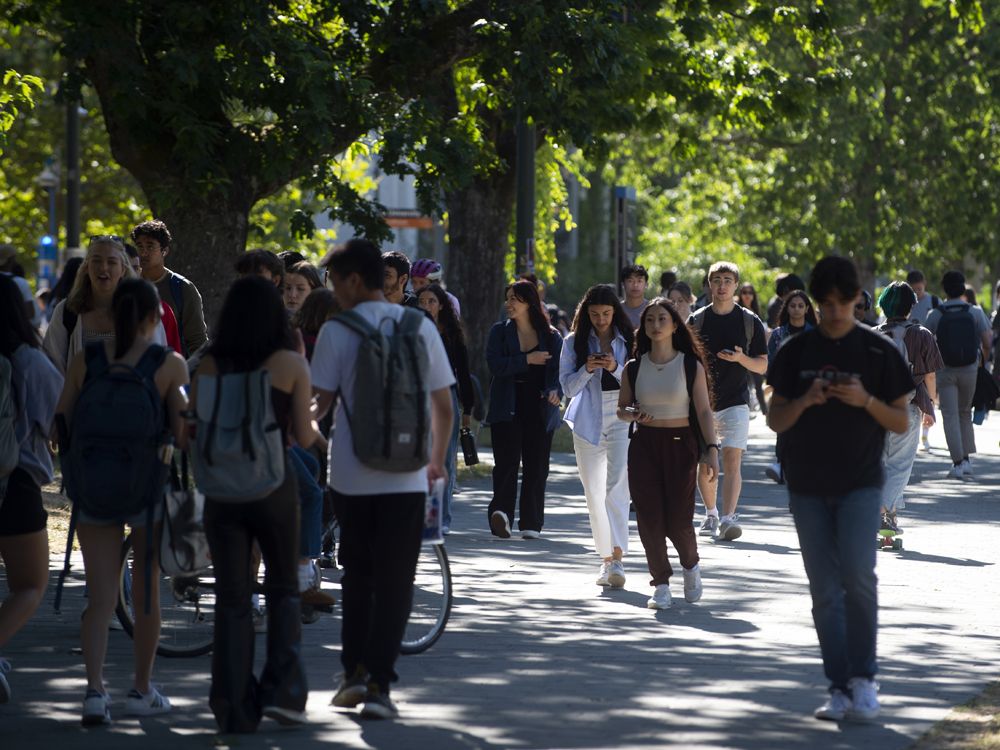Bank of Canada sees possible ‘positive’ spending surprise, but ongoing need for stimulus

In one scenario outlined by the deputy governor, spending ticks up even further and Canadians dip into about 15 per cent of their extra savings

Article content
The Bank of Canada sees the potential for a pleasant surprise from savings-fuelled household spending, but also that monetary stimulus will continue to be required for some time as the economy gradually recovers from the COVID-19 pandemic and is reshaped somewhat in its wake.
Bank of Canada Deputy Governor Lawrence Schembri on Thursday said that while many people have lost their jobs and taken hits to their finances during the pandemic, “forced and precautionary” savings have added up to an estimated $180 billion or so.
Schembri said those funds were built up because the disposable income of the average Canadian increased by an extra $1,800 in 2020, helped by government support programs. Meanwhile, their spending fell by about $4,000, as the pandemic and restrictions meant to curb it affected businesses where disposable income could be spent, such as restaurants and bars.
Although the Bank of Canada’s research suggests around 40 per cent of the extra savings ended up in the hands of high-income households, the money overall is enough to “meaningfully affect” the economy’s trajectory, the deputy governor said.
Advertisement
Story continues below
This advertisement has not loaded yet, but your article continues below.
Article content
“If Canadians spend more than we expect, it would strengthen the recovery in consumption and employment,” he added during a virtual speech to industry group Restaurants Canada.
A “positive surprise” from spending is possible, Schembri said, particularly if the pandemic is tamed and households grow more confident in the recovery.
In one scenario outlined by the deputy governor, spending ticks up even further and Canadians dip into about 15 per cent of their extra savings. On average, the bank estimates this would help boost employment by an additional 30,000 jobs per year over its projection in each of the next three years.
Yet the deputy governor also noted that there are risks to the economic recovery still looming, such as another wave of infections and lockdowns. Changes in consumer behaviour could also force companies to rejig their operations, which may have negative effects for workers and a job market that is still about 850,000 positions short of where it was a year ago.
“While new firms may be established, and workers retrained, this will take time,” Schembri said. “Monetary policy stimulus will be needed for an extended period to mitigate these risks and support both the restructuring and the recovery of our economy.”
Schembri’s comments came after the Bank of Canada said Wednesday that it would keep its key policy rate unchanged at 0.25 per cent, the level to which it had been slashed in response to the pandemic. The bank also said again that it aims to keep the rate that low until its two per cent inflation target is “sustainably achieved,” something it projected in January won’t happen until into 2023.
Advertisement
Story continues below
This advertisement has not loaded yet, but your article continues below.
Article content
Furthermore, the central bank said it was still buying at least $4 billion of Government of Canada bonds per week to push down borrowing costs. It added that it plans to keep buying those bonds until the economic recovery is “well underway,” although the amount will be adjusted depending on the strength of the rebound.
Those commitments have not been enough to wipe out speculation that the economy could run so hot it may prompt a withdrawal of at least some monetary stimulus. Even in announcing it would hold its policy rate steady, the Bank of Canada also said the country’s gross domestic product is now forecast to grow in the first quarter of 2021, rather than its earlier prediction that it would contract.
Schembri said on Thursday that the bank sees inflation rising to around the top of its one to three per cent target band in the next few months, but the increase would not be sustained and would eventually moderate.
“Following this speech, we believe the Bank has succeeded in maintaining a high degree of flexibility as they approach the April meeting,” strategists from TD Securities wrote in a note to clients on Thursday. “We continue to look for the BoC to reduce weekly bond purchases in April while increasing average duration.”
• Email: [email protected] | Twitter: GeoffZochodne






